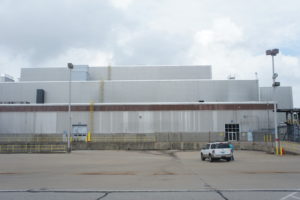In a previous life, I served as director of economic development and commerce policy studies at the National Governors Association in Washington, DC. Among my responsibilities was organizing programs and events related to business, taxation and transportation during the association’s two annual meetings. These gatherings provided the governors an opportunity to share their perspectives and engage experts before a national audience as most plenary and committee sessions were broadcast on C-SPAN and reported on multiple news outlets.
In February 1992, I was privileged to be part of one of the few sessions at which television cameras and reporters were absent. The topic was state development incentives. In attendance were five governors and the chief executive officers of five of the largest U.S. based corporations. The impetus for bringing these individuals together was growing concern corporations were holding states “hostage” by seeking larger and larger public subsidies in exchange for locating a major facility (e.g. the United Airlines maintenance facility in Indianapolis) or not relocating their headquarters (e.g., Sears in Chicago).
By the end of the discussion, both sides agreed these payments were an inefficient use of public resources and not in the interest of either party. However, both state governments and businesses were addicted to their use. And addiction is the perfect analogy. Development incentives provide a short-term high to the long-term detriment of the health and stability of the users. Corporations receive tax benefits which amount to a rounding error to businesses with annual revenues in the billions of dollars. Governments forego revenues which finance infrastructure and public services which support private sector economic activity.
The justification for continuing the practice of, in effect, paying ransom to influence corporate location and relocation decisions can be summarized in two sound bites from the NGA roundtable. Governors talked about the political pressure they faced to “do something” to improve their respective state economies. The CEO response was more telling. “If states did not offer these incentives, we wouldn’t take them. But how do we tell shareholders we turned down money which improves our bottom line.”
I was reminded of this particular experience as I read about the incentives which Carrier Air Conditioning is receiving to keep a portion of its work force in Indiana. First, keep in mind Carrier is a subsidiary of United Technologies. Second, United Technologies’ net sales in 2015 was $56.6 BILLION (source: 2015 Annual Report). The dollar value of the tax deferment is estimated at $7.0 million or .012 of one percent of the company’s net sales.

In an effort to help governors rethink the efficacy of providing tax incentives, our staff examined the cost/benefit of past state/corporate incentive agreements. The poster child was the location of Volkswagen’s U.S. manufacturing plant near New Stanton, Pennsylvania in 1978. To entice VW to chose this location, the State provided over $100 million in property tax exemptions and infrastructure improvements. Additionally, the state financed VW’s purchase of the site for $40 million. In return, VW promised to invest $250 million and operate for 30 years. However, VW shuttered the plant less than 10 years later while expanding North American operations in Chattanooga, Tennessee and Puebla, Mexico.
What is the lesson to take away from the VW saga and similar stories? The use of industrial incentives does not result in your “selling” your location to the company; you are only “renting” it. And as soon as another landlord offers a better deal, your tenant is likely to vacate the premises. To the workers at Carrier and the communities in which the company operates, enjoy the high. But be prepared for the “meltdown” when the drug wears off.
For what it’s worth.
Dr. ESP
An educated workforce, cost of living, proximity to infrastructure, fewer regs are some carrots that pop into mind but curious as to what the seminar CEOs ranked as the single most compelling incentive, if any.
You’ve asked a very complex question as companies make their location decisions for different reasons. This is best explained by the location of the Toyota plant in Georgetown, KY in the 1980s. Toyota America had narrowed its choices to KY and Tyler, TX. Texas has neither a personal or corporate income tax which was seen as its primary advantage. However, transportation costs and timing were critical to getting Toyota products to market. Their final decision was based on the percentage of the US population which could be reached by truck in one-day. From the Georgetown location, Toyota could overnight cars to distributors in the northeast (New York), southeast (Atlanta), midwest (Chicago) and midsouth (TX). Toyota later opened a facility in Fremont, CA under a joint venture with Chevrolet to better service the West Coast.
In contrast, J.C. Penny relocated its national headquarters to Plano, TX as Texas’ no personal income tax was seen as a boon for the high-paying white-collar executives housed at the primarily administrative facility. Proximity to the Dallas-Ft. Worth Airport was also cited as part of the location decision as JCP executives could travel non-stop to almost any U.S. city and many European and Asian destinations.
I know lots of companies were enticed to locate in small Missouri towns with deals like you are talking about. Big incentives, cheap rent and labor, as well.
And as soon as the work force in developing nations could be trained, they left those towns for even cheaper rent and labor.